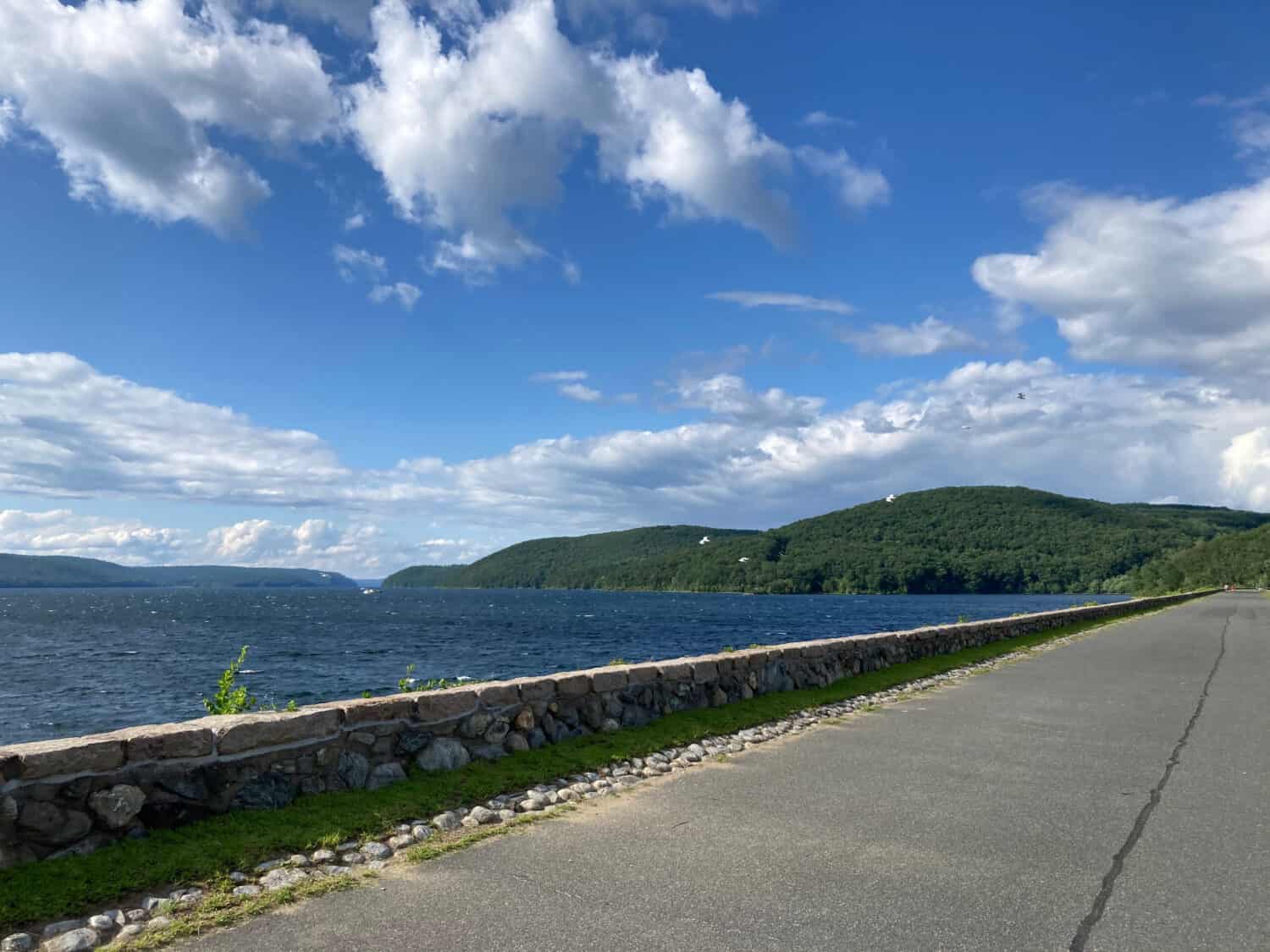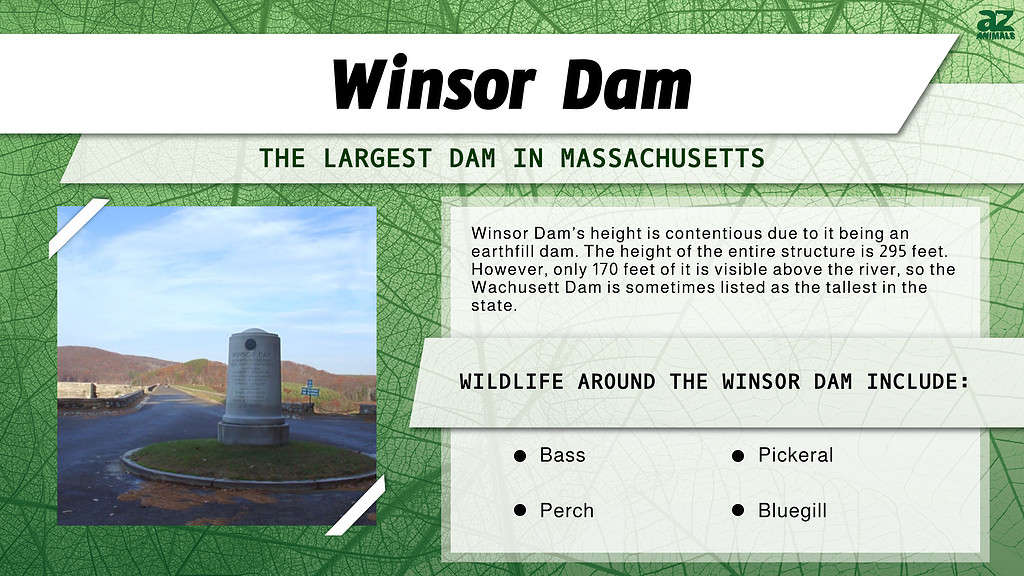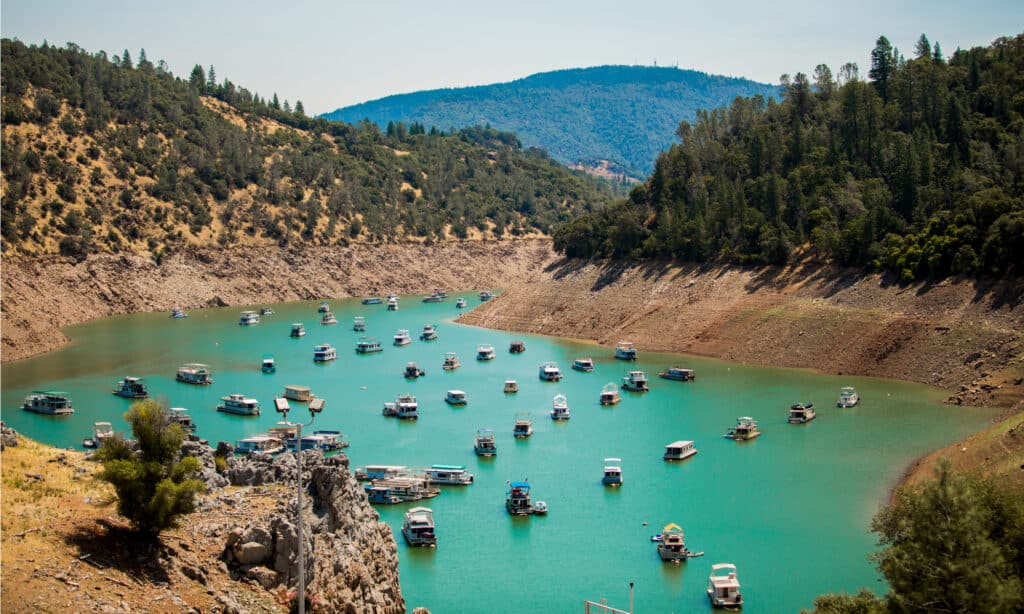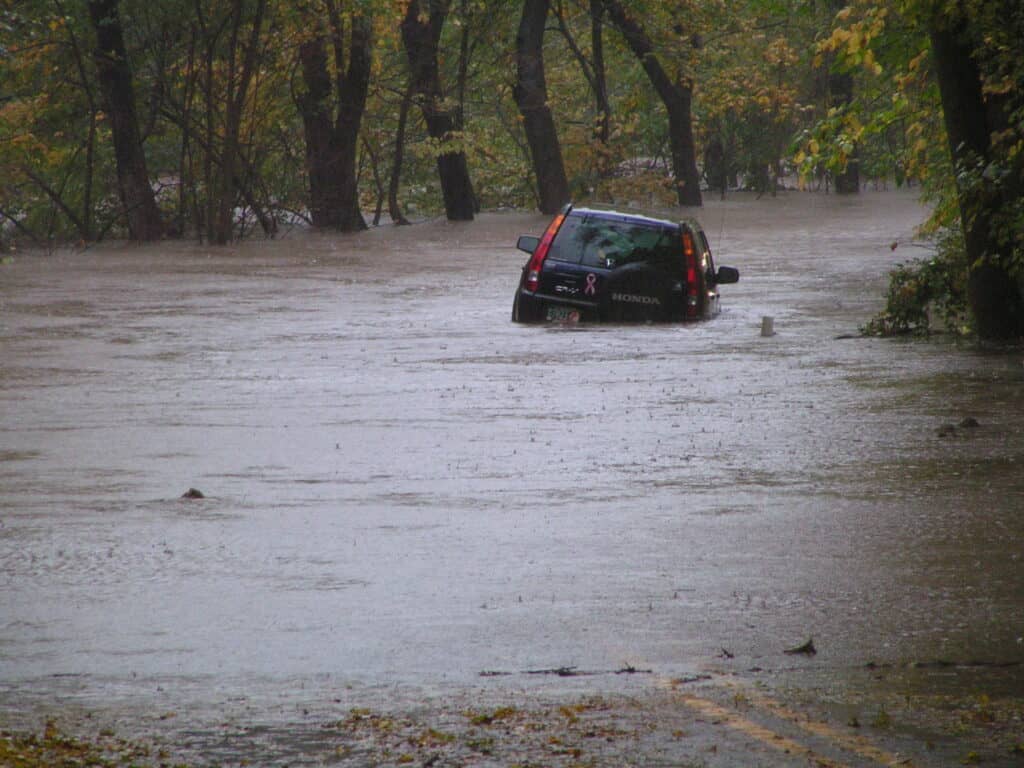Massachusetts has a coast along the Atlantic Ocean and several rivers running through it. While seemingly inundated with water, the demand for freshwater in the Boston area overtook the supply by the early 20th century. As a result, the lawmakers from the state decided they needed to create a reservoir system, a project that necessitated the creation of large dams. Learn about the largest dam in Massachusetts including where it is located, how it was built, and what would happen if it ever failed.
What Is the Largest Dam in Massachusetts?

Winsor Dam is the biggest dam in Massachusetts.
©Emma’sPhotos/Shutterstock.com
The largest dam in Massachusetts is the Winsor Dam, a structure that measures 295 feet high above the nearby bedrock, 170 feet above the river, and 2,640 feet long. The dam also measures 1,100 feet wide at the base.
Winsor Dam’s height is contentious due to it being an earthfill dam. The height of the entire structure is 295 feet. However, only 170 feet of it is visible above the river, so the Wachusett Dam is sometimes listed as the tallest in the state.
The dam is located between Ware and Belchertown in Massachusetts, central areas of the state. Winsor Dam is an earthen dam. These types of dams have a core of impervious material with outer layers of natural materials like compacted soil.
The dam has a bridge that runs its complete length, facilitating travel over the structure in some cases. The appropriately named Winsor Dam Road carries two lanes of traffic.
Winsor Dam impounds the Swift River and creates the Quabbin Reservoir. The reservoir measures 38.6 square miles and has a maximum capacity of 412 billion gallons of water. However, it is not the only structure required to hold the water in place. Goodnough Dike, another dam, helps impound the water at Beaver Brook, closing off the water flow in that part of the reservoir.

Where is Winsor Dam on the Map?
Winsor Dam is in the southwestern part of Quabbin Reservoir between the towns of Ware and Belchertown. The dam reservoir itself is located in the middle of the state, about 65 miles from downtown Boston.
Massachusetts Route 9 runs south of the dam. Visitors looking to get close to the dam can take MA-9 between Belchertown and Ware. From the west, people can turn directly onto Winsor Dam Road and take it to the Quabbin Visitor Center, a building on the west side of the dam.
Coming from the east, people can turn directly onto the eastern side of Winsor Dam Road if it is open to the public, or they can travel farther to Blue Meadow Road which takes them to a crossroads at Winsor Dam Road. Taking a right at that crossroad will lead to the Quabbin Visitor Center.
The History of the Winsor Dam

The Winsor Dam was completed in 1939, the same year that the Quabbin Reservoir started filling.
©L.A. Nature Graphics/Shutterstock.com
The Winsor Dam was part of an ambitious solution to a growing problem. The people of the Greater Boston area needed more water, and that meant the area needed a reservoir large enough to meet their demand.
Several people, including Frank Winsor for whom the dam is named, devised a plan to turn the Swift River Valley into a source of water for Boston and some outlying towns. Following a Supreme Court bout, the plan was approved, and construction started.
Unfortunately, that plan required the evacuation and relocation of people in several towns so that they could be inundated. People from the towns of Dana, Enfield, Greenwich, and Prescott were removed from the area, paid for their property, and relocated.
Construction of the Winsor Dam started in 1936, and the last town was evacuated on April 28, 1938. The dam was finished and opened in 1939, the same year that the Quabbin Reservoir started filling. Roughly 7 years later, the reservoir was filled.
During the same years, workers built the Goodnough Dike to prevent water from flowing out of Beaver Brook on the southeastern edge of the reservoir. Today, the area is popular for people that want to go hiking, exploring, picnicking, and fishing.
Some of the fish people catch in this area include:
- Bass
- Pickerel
- Perch
- Bluegill
- Trout
- White perch
- Brown trout
- Lake trout
The area has several scenic areas that provide a great view of the reservoir. Enfield Lookout, Hank’s Meadow, and the Quabbin Visitor Center each provide stunning views of the reservoir and the surrounding areas.
How Does the Winsor Dam Compare to the Largest in the United States?

The Oroville Dam in California impounds the Feather River.
©Salvadorxrodriguez/Shutterstock.com
| Dam | Height | Length |
|---|---|---|
| Winsor Dam | 295 feet | 2,640 feet |
| Oroville Dam | 770 feet | 6,920 feet |
| Hoover Dam | 726 feet | 1,244 feet |
| Dworshak Dam | 717 feet | 3,287 feet |
| Glen Canyon Dam | 710 feet | 1,560 feet |
The Winsor Dam is the largest dam in Massachusetts, closely followed by the Goodnough Dike as well as the Wachusett Dam. Just because Winsor Dam is the largest in the state does not mean it is the biggest in the country, though. In fact, it is much smaller than the largest dams in the United States.
Winsor Dam is a little less than half as tall as the Oroville Dam, the biggest in the U.S. Interestingly, both of them are earthfill dams.
What Would Happen if the Winsor Dam Broke?

Flooding would be a serious threat where the water breaches the dam.
©BONNIE WATTON/Shutterstock.com
Occasionally, the Quabbin Reservoir overtops the Winsor Dam spillway. However, if the entire structure failed, the water would flood local towns including Palmer, Beaver Lake, and Three Rivers. Hundreds or even thousands of people would die in the flooding. The rushing water would wipe out homes, businesses, and infrastructure. The water would break through other dams downriver, causing more damage that could creep over the state line into Connecticut.
Fortunately, the largest dam in Massachusetts is in good shape, and it is not likely to fail any time soon. For now, it helps contain a massive reservoir that provides water for millions of people throughout the state. Although it is not the biggest dam in the nation, it is certainly one of the most important on the East Coast.
Thank you for reading! Have some feedback for us? Contact the AZ Animals editorial team.








